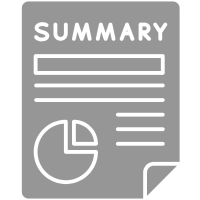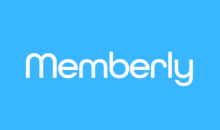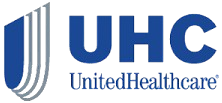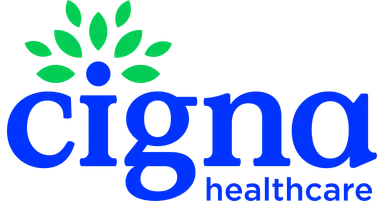SELF-FUNDED PPO HEALTH PLANS
Leased Networks from the Largest Carriers in the U.S. for Nationwide Access and Savings
Self-funded PPO plans offer flexible coverage with broad network access through major carriers like Blue Cross Blue Shield, UnitedHealthcare, Cigna, and Aetna.

Self-Funded PPO Health Plans: Savings and Trusted Networks
With a self-funded PPO (Preferred Provider Organization) health plan, employees can continue using the same doctors and facilities they know and trust. Transitioning from a traditional fully insured plan to a self-funded PPO plan is seamless, with minimal to no disruption, as the same networks remain in place. Health plans and employees benefit from pre-negotiated rates set by carriers and providers, ensuring cost efficiency and broad access to quality care.
A Memberly designed plan leases the network from major carriers like Blue Cross Blue Shield, UnitedHealthcare, Cigna, and Aetna (BUCAs) to ensure broad access to quality care.
Experts in Self-Funding
Employers who partner with Memberly gain unmatched visibility into their self-funded plan—insights they’ve never had before. Our proprietary analysis breaks down exactly where every dollar goes, giving businesses the power to make informed, strategic decisions about their health plans.
We provide in-depth calculations on:
✔ Fixed Cost Ratios
✔ Fully Insured Equivalents
✔ Tier-Based Claims Funding
✔ Stop-Loss Attachment Point
With this level of transparency, employers can anticipate costs, optimize funding strategies, and make critical adjustments months before renewal ensuring a seamless and cost-effective approach to employee benefits. Take control of your healthcare plan with Memberly.

Employers have two primary options for funding claims in their self-funded health plan.
Self-Funded – Pay only monthly fixed costs, with claims funded as they occur, providing flexibility and cost control.
Level-Funded – Predictable budgeting by accurately calculating claims funding, making monthly premium payments with matching amounts deposited into a claims fund.

Choice of medical network is a key factor in plan costs. Employers typically choose between two options:
PPO (Preferred Provider Organization) – Offers broad network access with pre-negotiated rates, providing flexibility but often at a higher cost.
RBP (Reference-Based Pricing) – Uses cost benchmarks (such as Medicare rates) instead of a traditional network, leading to significant savings.
Smart Monitoring for Self-Funded PPO Plans
With self-funded PPO plans, Memberly continuously tracks key data points—such as minimum aggregate deductible levels, monthly enrollment, and projected annual funding versus claims—to ensure accurate performance insights and plan sustainability.
This real-time tracking allows Memberly to fine-tune the plan as needed, helping employers control costs, monitor trends, and optimize for future surplus opportunities.

Transparency
A clear breakdown of where every dollar goes in a self-funded health plan.
Claims Funding
Stop-Loss Cost
Network Cost
Admin Cost

Cost Controls
Identifying inefficiencies and opportunities to optimize the self-funded plan.
Direct Contracts
Rx Rebates
J-Code Controls
Network Tiering

Data-Driven Decisions
Helping employers make strategic choices to balance costs and coverage.
Fixed Cost Ratio
Risk Review
Margin Forecast
Rate Analysis

Improved Performance
Maximizing the value of
every healthcare dollar
spent.
Richer Benefits
Lower Rates
Branded PPOs
Better Support
Self-Funded Plan Types
Choosing the Right Self-Funded Plan: PPO, RBP, or MEC
Self-funded health plans come in three main types: PPO, Reference-Based Pricing (RBP), and Minimum Essential Coverage (MEC). PPO plans offer the broadest access by utilizing a provider network and include stop-loss coverage to protect against high claims. RBP plans, in contrast, do not rely on a hospital network but instead reimburse providers based on a percentage of Medicare rates, creating significant cost savings. MEC plans, which do not include stop-loss insurance, provide basic preventive care benefits to meet compliance requirements at the lowest cost.

PPO
Preferred Provider Organization
Hospitals Network: Aetna, Cigna, United Healthcare, or BCBS
Physician Network: Aetna, Cigna, United Healthcare, or BCBS
Stop-Loss: Individual and Aggregate
Administration: Managed by TPA
Hospitalization: Covered subject to plan terms.
Pricing: Potential savings of 20-40% less than fully insured plans.

RBP
Reference-Based Pricing
Hospital Network: No hospital network. RBP is used to reprice bills.
Physician Network: Multiplan PHCS Physician-only network or no network.
Stop-Loss: Individual and Aggregate
Administration: Managed by TPA
Hospitalization: Covered subject to plan terms.
Pricing: Potential savings of 40-60% less than fully insured plans.


MEC
Minimum Essential Coverage
Hospital Network: No hospital network. MEC plans do not cover hospitalization.
Physician Network: Multiplan PHCS Physician-only network or no network.
Stop-Loss: No stop-loss
Administration: Managed by TPA
Hospitalization: Not covered in basic MEC plans.
Pricing: $50 pepm plus claims. Same rate for EE, EC, ES, and Family.
Staffing Agency
30% Rate Reduction
350
EMPLOYEES
Reduced Renewal Rates for Staffing Agency
A staffing agency with a self-funded health plan faced a 38% renewal increase driven by higher stop-loss premiums and aggregate factors.
Memberly re-marketed the stop-loss coverage and negotiated a reduction in administrative and network fees from $127 to $46 PEPM. These strategic cost-saving measures successfully lowered the renewal increase to just 8%, delivering significant financial relief to the employer.
Union
$430K Saved
400
EMPLOYEES
Reduced Stop-Loss Through Direct Contracting
A union faced rising healthcare costs due to escalating stop-loss premiums. Memberly leveraged its expertise to drive significant savings through:
- Stop-Loss Negotiation – Successfully reduced stop-loss costs by $430,000, securing more favorable terms.
- Direct Hospital Contracting – Partnered with a regional hospital system to establish a direct contract, lowering claims costs and improving provider access.
Manufacturer
Return of Claims Funds
15
EMPLOYEES
Reduced Renewal Rates for Staffing Agency
A New England-based aerosopace manufacturer faced another 15% premium increase on their Tufts Pilgrim health plan. Memberly transitioned them to a self-funded RBP plan, unlocking significant savings.
Year 1: Received a $55,000 refund from unused claims funds.
Year 2: Received a $50,000 refund, bringing total savings to $105,000.
Result: A 30% net reduction in health plan costs over two years.
Self-Funded Case Studies
These are just a few self-funded success stories showcasing how diverse businesses have benefited from Memberly’s strategic expertise and execution. In every case, benefits were maintained or enhanced while achieving significant cost savings. There are multiple ways to optimize healthcare plans and control costs, but it takes deep industry experience to do it effectively—the kind of experience Memberly brings to every client.

Featured Case Study: Staffing Agency
750 Lives
SELF-FUNDED PPO
With Memberly at the helm, staffing agency slashes renewal increase from 38% to 8%.
A staffing agency with a self-funded health plan covering 750 lives was facing a 38% renewal increase, driven by rising stop-loss premiums and higher aggregate factors (the projected claims liability).
Memberly stepped in with a strategic solution—implementing a national PPO network with stronger discounts than the agency’s previous network. This move significantly reduced stop-loss costs. Memberly also negotiated a reduction in administrative and network fees from $127 to just $46 PEPM.
Importantly, the agency maintained strong benefits without resorting to higher deductibles or reduced coverage—preserving the employee experience while improving cost-efficiency.
The result? A renewal increase of just 8%, delivering meaningful savings and long-term plan sustainability.
Self-Funded Plan Components
Key Components of a Self-Funded Health Plan
Memberly strategically assembles the critical components of a self-funded health plan, ensuring seamless integration for cost savings, efficiency, and employee satisfaction. These components work together to create a customized, data-driven healthcare solution that meets the unique needs of each employer.

TPA
Third-Party Administrator (TPA) – Manages claims processing, eligibility, and compliance, ensuring smooth plan operation.

Stop-loss
Stop-Loss Insurance – Protects employers from catastrophic claims by covering costs beyond a predetermined threshold.

Network
Provider Network (PPO or RBP) Grants employees access to preferred doctors, hospitals, and specialists at negotiated rates.

Pharmacy
Pharmacy Benefit Management (PBM) – Controls prescription drug costs by securing competitive pricing and streamlining medication access.

Containment
Includes medical bill audits, direct provider contracting, and reference-based pricing to minimize unnecessary expenses.

Support
Member Support & Navigation – Provides employees with guidance on plan utilization, provider selection, and billing issues.
The Self-Funded Plan Quoting Process
The quoting process for a self-funded health plan varies based on an employer’s current coverage. Memberly ensures a seamless evaluation by collecting key data to provide accurate, competitive pricing.

If already self-funded - time to compare
By providing the most recent TPA invoice, renewal notice, census, two years of claims experience, and SBCs we can analyze cost trends and optimize plan structure to create a cost-effective, tailored self-funded solution.

Recent TPA Invoice
Include detail

Renewal Notice
Most recent

Employee Census
Including dependents

Claims Data
2 years if available

Plan SBCs
Summary of Benefits
If fully insured - Looking at options
When transitioning to self-funding, employers should provide their carrier invoice, renewal notice, census and SBCs to help assess potential savings and risk factors, ensuring a smooth and cost-effective transition.

Carrier Invoice
Include detail

Renewal Notice
Most recent

Employee Census
Including dependents

Plan SBCs
Summary of Benefits
Starting fresh - No current health plan
If a business is uninsured, we only need a census to develop a cost-effective plan tailored to their needs.

Employee Census
Including depenndents
Common Questions
Learn More About Self-Funded PPO PlanS

Self-Funded PPO Plans
Self-Funded PPO Plan:
In a self-funded PPO plan, the employer assumes the financial risk of paying employee healthcare claims directly. Stop-loss insurance is purchased to protect against higher-than-expected claims. A third-party administrator (TPA) manages claims, member support, and access to a national PPO network (such as Aetna, Cigna, UnitedHealthcare, or Blue Cross Blue Shield).
When claims are lower than projected, the employer retains the savings. In level-funded arrangements, up to 100% of unused claim funds—also called margin—can be refunded to the employer.
Fully Insured PPO Plan:
In a fully insured PPO plan, the employer pays a fixed monthly premium to an insurance carrier. The insurer assumes all claims risk and handles plan administration. There’s no opportunity to recover unused funds.
Employers access national PPO networks by partnering with a third-party administrator (TPA) that holds leasing agreements with major carriers. This provides employees with broad in-network provider access while allowing employers full control over plan design and funding.
A TPA is a vital partner in a self-funded plan. Their responsibilities include:
• Processing and paying claims
• Providing access to PPO networks
• Offering member support and customer service
• Ensuring compliance with federal and state regulations
• Coordinating with stop-loss insurance carriers
• Delivering detailed reporting and analytics to employers
• Providing a member portal to view claims, access benefits, and retrieve digital ID cards
• Offering an employer portal for real-time tracking of plan usage, financial data, and performance
• Broad Access: Access to large national networks with thousands of providers
• Discounted Rates: Pre-negotiated PPO discounts reduce claims costs
• Flexible Design: Employers can customize deductibles, copays, and covered services
• Brand Recognition: Familiar provider networks like Aetna, Cigna, UHC, and BCBS
• Higher Costs: Compared to reference-based pricing (RBP), narrow networks, or direct contracting
• Access Fees: PPO leasing includes per-employee-per-month (PEPM) fees
• Limited Rate Control: Employers must accept the PPO’s set pricing and repricing methods
• Balance Billing Risk: If out-of-network services are allowed, providers may bill members above allowed charges
Yes. Especially for larger or multi-location employers, combining multiple PPO networks can help:
• Expand geographic coverage
• Provide different options by region or division
• Offer backup or secondary networks
Employers protect themselves with stop-loss insurance, which limits financial exposure. Stop-loss insurance includes:
• Specific Stop-Loss: Caps liability per individual
• Aggregate Stop-Loss: Caps total claims for the entire group during a plan year
This coverage ensures protection from catastrophic or unusually high-cost claims.
Yes. One of the key advantages of a PPO is out-of-network access. However:
• Out-of-network care typically costs more due to higher deductibles and coinsurance
• Members may face balance billing, where the provider charges above the PPO’s allowed amount
Employers can manage and reduce healthcare costs by:
• Negotiating better PPO access terms with the TPA or carrier
• Encouraging employees to use in-network providers
• Implementing reference-based pricing for specific services
• Offering wellness and disease management programs to improve long-term health outcomes and lower claims
Level Funding a Self-Funded Plan
Level funding is a type of self-funded health plan where the employer pays a fixed monthly contribution that covers the cost of claims, administrative fees, and stop-loss insurance. This fixed amount is determined based on expected claims and administrative costs, and if claims are lower than expected, the employer may receive a refund or credit for the surplus.
Traditional self-funding involves an employer paying for actual medical claims on an ongoing basis, without a fixed contribution. The employer assumes the risk for the claims and can have significant fluctuations in monthly costs. In contrast, level funding offers more predictability with fixed monthly payments, reducing the volatility associated with claims in traditional self-funded plans.
Surplus claims funding refers to the difference between the amount the employer contributed to the plan (in the form of monthly premiums) and the actual claims costs that were incurred. If claims are lower than expected, the surplus may be refunded to the employer or credited toward future plan contributions. This is one of the advantages of level funding.
Surplus claims funding is typically returned to the employer after all claims are settled for the plan year or contract period. The specific timing may vary depending on the TPA’s terms and level funding arrangement. Some plans may return 100%of the surplus, while others may return less such as 50% in the form of a credit toward the next year’s funding or keep it as a reserve for future claims.
Level-funded plans offer the employer the ability to take on a portion of the risk but provide more predictability than traditional self-funding. The employer is still responsible for claims costs but is protected from catastrophic claims through stop-loss insurance. The fixed monthly contribution helps smooth out the risk, making it easier to budget for healthcare costs.
If claims exceed the expected amount in a level-funded plan, the employer is responsible for covering those additional costs—up to the plan’s maximum claims limit. Once that limit is reached, stop-loss insurance kicks in. This coverage protects the employer by reimbursing claims that exceed the maximum funding threshold, limiting the employer’s financial exposure to large or unexpected medical expenses.
Fixed monthly contributions in a level-funded plan are based on factors such as the employer's size, employee health risk, historical claims data, administrative costs, and stop-loss premiums. These contributions are designed to cover expected claims, administrative fees, and stop-loss protection, ensuring the employer has a predictable monthly expense.
Level funding provides several benefits for employers, including:
- Predictable monthly costs for budgeting purposes.
- Protection from high claims costs through stop-loss insurance.
- Surplus refund potential if claims are lower than expected.
- Greater flexibility and control over plan design compared to fully insured options.
- Transparency into claims data and cost management opportunities.
Yes, level funding is particularly attractive for small and medium-sized businesses that want the benefits of self-funding but may not have the resources or risk tolerance for traditional self-funding. Level funding offers a more predictable and manageable way for smaller employers to assume some risk without the volatility of traditional self-funding.
When funding a level-funded plan to the maximum, employers are essentially pre-funding their plan based on expected claims, stop-loss coverage, and administrative costs. To fund a plan to the max means ensuring that the monthly contributions cover all anticipated costs, including potential catastrophic claims. Employers can work with Memberly and our stop-loss carriers to estimate claims as accurately as possible and add a buffer for higher-than-expected expenses. The level of stop-loss protection (specific or aggregate) plays a key role in determining how much funding is needed to be “funded to the max”. By funding the plan to its maximum level, employers eliminate the risk of underfunding and ensure that the plan operates without further claims exposure while also optimizing the chances of receiving a surplus refund if actual claims are lower than projected maximum.
Sourcing Stop-Loss Insurance
Stop-loss insurance protects employers from excessive claims by setting a predetermined threshold, after which the insurance carrier covers claims. This is important for self-funded plans because it helps mitigate the financial risk of unexpectedly high medical costs.
Memberly partners with a network of reputable stop-loss carriers, offering customized solutions based on the employer’s specific plan design, risk tolerance, and funding requirements. Memberly sources stop-loss options that are competitive and tailored to each employer’s needs.
Memberly sources two main types of stop-loss insurance:
- Individual Stop-Loss (ISL): Covers claims for individual employees once medical costs exceed a specific amount.
- Aggregate Stop-Loss (ASL): Protects the entire plan if total claims exceed a set amount for the plan year.
Memberly conducts a detailed actuarial analysis based on historical claims data, plan design, and the employer’s risk profile to determine the most appropriate stop-loss coverage. Memberly then provide options for both individual and aggregate stop-loss policies.
Yes, Memberly partners with leading stop-loss insurance providers known for their reliability and flexibility. These carriers are selected based on their ability to offer competitive pricing, strong service, and comprehensive coverage options.
Yes, Memberly sources stop-loss insurance for employers of all sizes, from small businesses to large enterprises. Memberly’s tailored approach ensures that the stop-loss coverage is suitable for the employer’s workforce size and healthcare risk.
By leveraging its partnerships with multiple stop-loss carriers, Memberly is able to negotiate competitive offersfor employers. Memberly’srisk management strategies and in-depth knowledge of the market help reduce overall costs.
The process typically involves underwriting analysis, where Memberly collects claims data and evaluates the employer’s needs. Based on this analysis, Memberly presents customized stop-loss options and assists the employer in selecting the best policy for their plan.
Yes, Memberly provides ongoing support and guidance during the stop-loss renewal process, helping employers reassess their stop-loss coverage, adjust their policies based on claims trends, and explore better pricing or policy options each year.
Memberly strategically partners with high-quality, cost-effective medical networks to help lower the overall risk of the self-funded health plan. By using direct contracting with medical providers, including PPO and narrow networks, Memberly helps employers negotiate lower fees and reduce claim volumes, which in turn reduces the exposure to stop-loss claims. This strategic alignment can lead to significant savings on stop-loss premiums.








